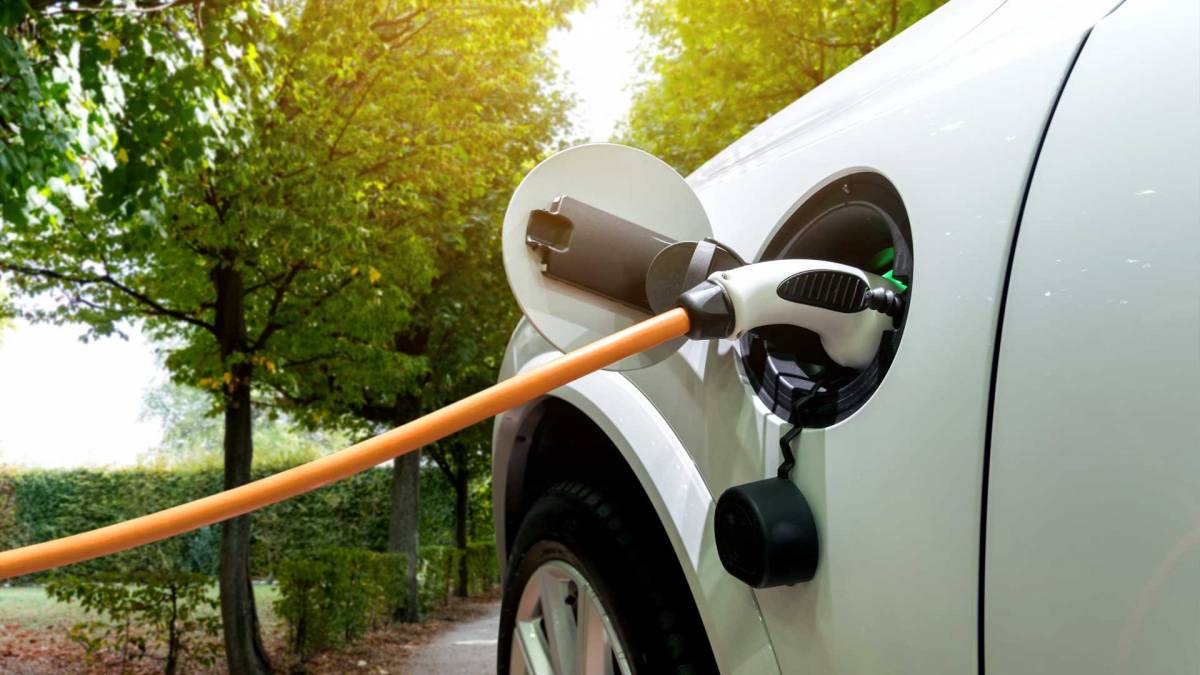It’s a lot less than with a conventionally powered model, that’s for sure.
Though electric vehicles may still cost more to purchase than their conventionally powered counterparts, they’re generally cheaper to keep running via affordable home charging. Electric vehicles also save their owners cash on an ongoing basis via lower long-term maintenance costs.
That’s because EVs eliminate over two-dozen mechanical components that would normally require periodic service. An EV owner avoids having to pay for things like tune-ups, oil changes, cooling system flushes, transmission servicing, and replacing the air filter, spark plugs and drive belts. Sources suggest electric vehicle owners spend roughly a third of what conventionally powered auto owners do for regular service.
Still, an EV is not maintenance free. All automakers insist owners follow a series of periodic checks and services in order to keep the vehicle’s warranty in effect. If you don’t follow the recommended schedule, your car may not be covered if it requires repairs.
Aside from tire rotation, replacing the cabin air filter and wiper blades, and topping off the washer fluid, much of this comes down to various mechanical inspections. Automakers advise, and appropriately so, that aside from simple tasks like checking the air pressure in the tires, topping off the windshield washer fluid, and perhaps changing the wiper blades, these procedures should be performed by a trained technician at the dealer’s service department.
As an example of what’s typically required, here’s a look at the maintenance schedule for the 2019 Chevrolet Bolt EV:
Monthly (performed by owner):
Check the tire pressure and adjust as necessary. Examine the tires for excess wear. Check the windshield washer fluid and fill as necessary.
Every 7,500 miles:
Have the tires rotated. Check the coolant level for the battery, cabin heater, and the power inverter, accessory power, and charger modules. Visually check for fluid leaks. Inspect the brakes. Visually inspect the steering, suspension, and chassis components for damage. Inspect the power steering, halfshafts and drive shafts for excessive wear, leaks, or damage. Check the restraint (airbags) system. Lubricate body components (door locks). Check the accelerator pedal for damage, high effort, or binding and replace if necessary. Visually inspect the gas struts (suspension) for signs of wear, cracks, or other damage. Check the tire sealant expiration date, if equipped (this is used to temporarily seal and inflate a damaged tire).
Twice a year:
Flush corrosive materials (i.e. road salt) from the underbody using plain water.
Every 15,000 miles:
Replace the windshield wiper blades.
Every 36,000 miles:
Replace the cabin air filter (more frequently if necessary).
Every 75,000 miles:
Replace the hood and/or body lift support gas struts.
Every five years:
Drain and fill the vehicle coolant circuits. Replace the brake fluid.
Every seven years:
Have the air conditioning desiccant changed. (it absorbs and holds moisture in a mobile air conditioning system to help prevent corrosion).
For its part, Nissan gives two separate maintenance schedules for the Leaf. Schedule 1 is for more severe operating conditions that include frequent short trips of less than five miles in normal temperatures or 10 miles in freezing weather, stop-and-go driving in hot weather, low-speed driving for long distances, driving in dusty conditions or on rough, muddy or salt spread roads, or using a car-top carrier.
Schedule 2 requires less-frequent maintenance, but applies only to highway driving in temperate conditions. The bottom line here is that most Leaf owners will require Schedule 1 service.
As with the Bolt, this comes down to assorted periodic mechanical inspections, having the tires rotated every six months or 7,500 miles, and changing the cabin air filter every 12 months or 15,000 miles. In addition, the brake fluid should be replaced every 24 months or 30,000 miles, and the coolant changed after 15 years or 120,000 miles.
Now affording less maintenance doesn’t necessarily mean an electric vehicle is bulletproof. EV owners will eventually need to replace the tires, have the brakes serviced, and could be required to replace steering and suspension components, hoses, headlamps, taillights, and so on. As with any other type of vehicle, a wheel alignment will be necessary if the car pulls to one side or is exhibiting uneven tire wear.
And then there’s an EV’s battery pack to consider, which is by far its costliest component. All electric vehicle batteries will degrade over time and lose some of their ability to maintain a full charge, though this happens gradually. It’s more of an issue with older EVs that could barely muster 80 miles on a charge than today’s crop of 200-mile-plus models. At that, only a relative handful of electric cars manufactured to date have reportedly degraded to the point where they needed to be replaced. Still, if you own an EV long enough you’ll see its range decline, and if it falls short enough to become an inconvenience, you may need to swap out the battery pack or trade the vehicle in for a new one.


